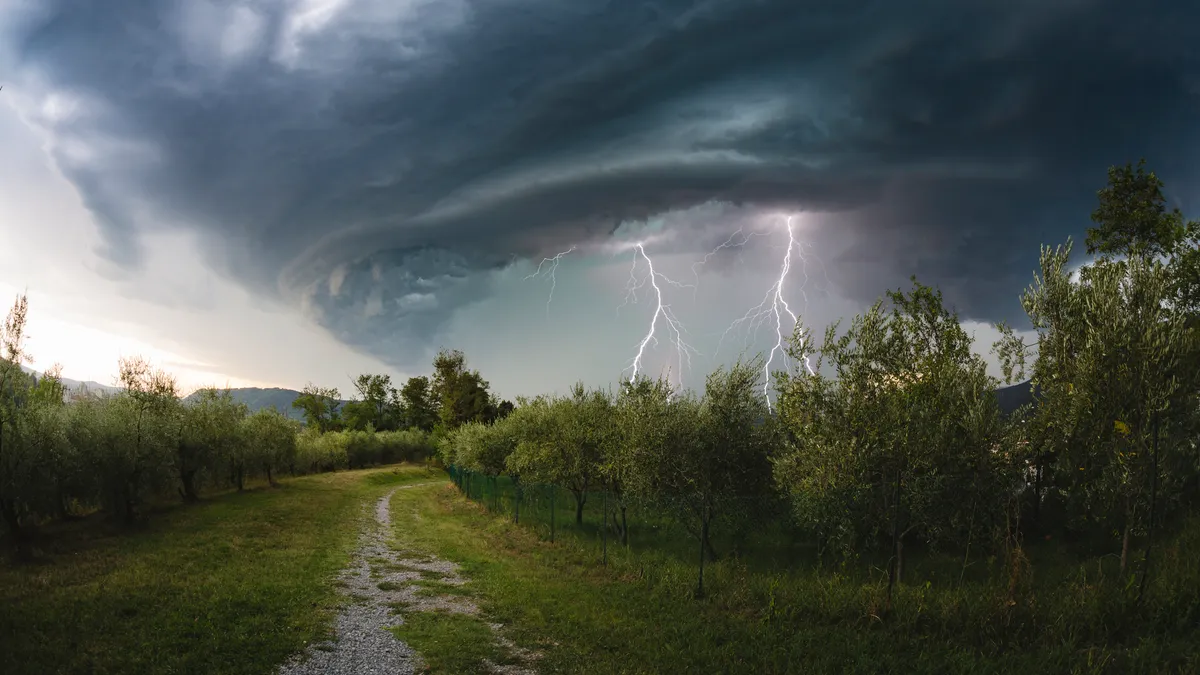Extreme weather continues to be a major threat to grid reliability and resilience.
Power outages from extreme weather events have doubled over the past two decades and there are no signs of slowing down. Other estimates show that outages have more than doubled over the past six years.
From the devastating impact of Hurricane Katrina in 2005 to the deadly super outbreak of tornadoes in Alabama in 2011 to the unusually heavy snowstorms in Los Angeles just this year, extreme and adverse weather is putting grid resilience to the test.
An antiquated and costly restoration process
On average, outages from severe weather are lasting longer and occurring more frequently, making the restoration process even more challenging as electric utilities attempt to safely get the lights back on while balancing customer expectations.
Antiquated and costly, the restoration process relies heavily on emergency truck rolls and physical assessment of equipment and infrastructure. There are also increasing safety risks to utility personnel who often work under intense pressure and unpredictable weather.
Modernizing distribution equipment and infrastructure with upgrades that can streamline the outage restoration process is critical to getting and staying ahead of these operational challenges as electric utilities build the utility of the future.
“There’s so much that needs to happen in terms of modernizing the grid,” says Mike Edmonds, Chief Commerical Officer for the Chicago-based grid innovator, S&C Electric Company. “At S&C, we know there’s a need to transform the distribution grid. We need to look at the grid holistically so that every part of the grid gets attention.”
Yet, upgrades to generation and transmission assets seemed to dominate the attention of most smart grid conversations in past years, likely due to aggressive decarbonization efforts and mandates. To truly prepare a grid of the future, end-to-end modernization – from substation to the grid edge – must become a larger part of these conversations.
Today, less than 17% of utility stakeholders view distribution upgrades and modernization as a challenge for the electric industry. Interestingly, what has been cited as the top challenge is renewable integration, which is a proverbial case of putting the cart before the horse, given that these technologies will need to be integrated into a distribution system that is capable of supporting these new technologies.
Changing consumer habits
Then there is the customer experience. Changing consumer habits are directly impacting grid operations. With more consumers working from home now due to increasing remote work arrangements, energy demands increased by as much as 23% compared to when they worked from the office.
“How much of our digital lifestyles rely on constant power? If you don’t have that, how much does your own personal life shut down?” asks Edmonds.
Edmonds also noted that with the center of business being distributed toward the edge of the grid because people are working from home, so there is a business impact to individual experiences. This makes even the shortest of outages noticeable and concerning. A five-minute disruption could mean an endless buffering loop during conference meetings or a frozen Zoom screen during important presentations; or, worse, being without functioning medical equipment when needed most.
Increasing demand for energy
As daily life demands more energy, the case for modernizing the last mile becomes even more apparent.
Consider electric vehicles, which are expected to become 60% of all global vehicle purchases by 2030. While generation and transmission upgrades are certainly critical for getting the power to a region, electric vehicles and other distributed resources must ultimately tie into the distribution grid, which must be reliable enough to handle this increasing load while being resilient enough to defend itself against severe weather and other potential threats. This becomes a significant reliability and resilience challenge for the current power grid.
The distribution grid itself will require technologies and strategies to prepare. Proactive investments in technologies, such as distribution automation, lateral protection, communication systems and other strategies, will help to increase both reliability and resilience while improving the overall customer experience.
“We’re seeing continued adoption of technology that can actually mitigate outages from temporary faults, can rapidly rebuild the grid. What's key for me is keeping the grid on during storms — and we’ve seen examples of that in Florida and other places,” says Edmonds. “And if devices do trip out on a permanent fault, they can quickly be put back in a very straightforward manner.”
An innovative breakthrough for reliability
S&C Electric Company, a global provider of equipment and services for electric power systems, recently introduced its EdgeRestore® Underground Distribution Restoration System, to bring self-healing technology to the grid edge and accelerate modernization of the last mile.
“It’s really the last piece of the puzzle, in a way, when we think about rounding out a suite of solutions for the grid edge,” says Edmonds. “Our EdgeRestore system brings self-healing technology to the very edge of the grid, eliminating emergency truck rolls and allowing the devices themselves to restore power. This ultimately minimizes the impact of outages.”
This groundbreaking technology helps to reduce the impact of permanent outages from hours to 60 seconds or less, helping to quickly identify and isolate faults, restore power and improve reliability and resilience by reducing power outages for underground residential power distribution.
Modernizing the last mile will require real, practical solutions. If improving reliability and resilience is a priority for your organization this year, visit us at sandc.com/EdgeRestore to learn more.










